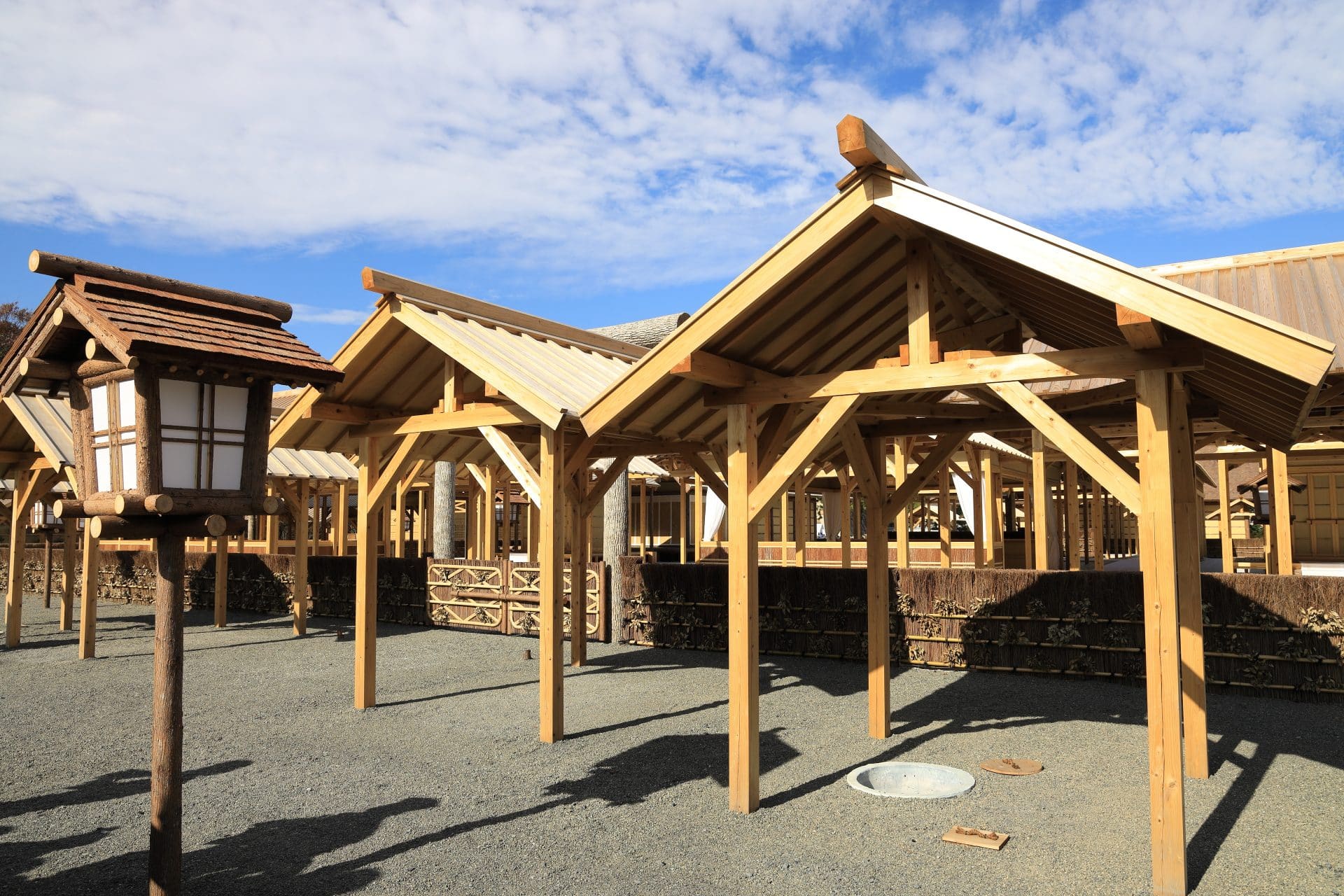
The Daijosai at Daijokyu halls. © Funboxphoto / Shutterstock.com.


The Daijosai at Daijokyu halls. © Funboxphoto / Shutterstock.com.
At the start of a new reign, the Daijosai takes place, ‘the great sacrificial ritual’ to worship Amaterasu. Pictured here is Temmu, the fortieth emperor of Japan, who is said to have originated this tradition in 672 CE. The customs have remained broadly the same over the centuries. Hemp fibres, textiles and clothing have a ritualistic role in most ceremonies surrounding the succession to the throne.
Ancient sources describe imperial messengers announcing the Daijosai in August by bringing large quantities of hemp to Ise Jingu and other important local shrines. Whenever the heir to the throne visited a Shinto shrine he would offer hemp to the kami. When he cleansed himself in a river near a shrine, he always took a bundle of hemp with him, along with other ritual objects. Rice for offerings had to be carried in bags made of hemp textile.
The Daijosai is held as a private event to avoid violating the separation of church and state. During the Daijosai itself, the emperor fulfills his role as a Shinshoku. To cleanse the entire nation, he leads an Oharae ritual (Great Purification) at Ise Jingu. Various offerings are made, including a kimono made of soft textiles (silk) and an overcoat made of rough textile (hemp). Next to the altar are small Sakaki trees decorated with bundles of golden hemp bast.
One of the offerings during the Daijosai was the Aratae, a sacred piece of hemp textile. Since ancient times, the Awainbe family has had the important responsibility of presenting the hemp clothing to be used at the Daijosai.
In 1948, during the US occupation of Japan, the Cannabis Control Act was introduced. Extremely strict anti-cannabis laws remain in place to this day. Although industrial hemp remained legal under very strict supervision, the once-flourishing hemp industry languished. In 1954, just before the new rules began to be harshly enforced, 37,000 people were cultivating 麻 throughout Japan. However, in 2021, only twenty-seven people received cultivator licenses.
Here you can see a video of the harvest ceremony of hemp for the Aratae:
Sign up to get the latest news about the museum, upcoming exhibitions and events.
Oudezijds Achterburgwal 148
+31 (0)20-6248926
amsterdam@hashmuseum.com
Monday to Thursday: 12:00 – 20:00
Friday to Sunday: 10:00 – 22:00
More information
Carrer Ample 35
+34 93 319 75 39
barcelona@hashmuseum.com
Every day: 11:00 – 20:00
More information
© 1987 - 2024 Hash Marihuana & Hemp Museum. All Rights Reserved. CSS Status 404